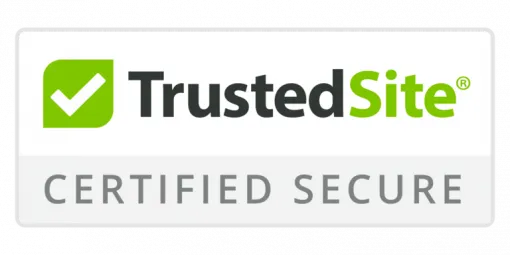Providing IT Consulting for Tech Companies
Embarking on a side hustle in IT consulting for tech companies can be a rewarding venture if approached with careful planning and execution. Here's a step-by-step guide on how to make it work and how to implement it effectively.
1. Assess Your Skills and Market Demand
Before diving into IT consulting, evaluate your specialized skills and determine which areas are in high demand. For instance, expertise in cloud migration, cybersecurity, or data analytics can be particularly valuable.
Identifying your niche will help you target specific industry challenges and enhance your marketability.
2. Define Your Services
Clearly outline the services you intend to offer. Are you focusing on cloud consulting, cybersecurity assessments, or IT infrastructure optimization?
Defining your services will not only help you tailor your approach but also make it easier for potential clients to understand what you offer.
3. Build a Strong Network
Networking is crucial in the consulting world. Begin by connecting with former colleagues, attending industry events, and joining professional groups on platforms like LinkedIn.
A strong network can lead to referrals and new business opportunities.
4. Stay Current with Technology Trends
The tech industry evolves rapidly, and staying updated with the latest trends and advancements is essential. Regularly participate in webinars, take online courses, and read industry publications to keep your knowledge fresh and relevant.
5. Create a Professional Online Presence
Develop a professional website that showcases your expertise, services, and client testimonials.
A strong online presence can significantly boost your credibility and help attract potential clients. Additionally, consider writing blog posts or creating content that highlights your knowledge and skills.
6. Set Up Your Business
Register your consulting business and ensure you have all necessary licenses and insurance.
This step is crucial for protecting yourself legally and establishing your business as a legitimate entity.
7. Market Your Services
Utilize digital marketing strategies to reach your target audience. This can include search engine optimization (SEO), social media marketing, and email campaigns.
Tailor your marketing efforts to highlight how your consulting services can solve specific problems for tech companies.
8. Balance Your Time
Balancing a side hustle with a primary job requires effective time management. Create a schedule that allocates specific times for consulting work, and use productivity tools to help you stay organized.
Ensure that your side hustle does not interfere with your primary job responsibilities.
9. Deliver High-Quality Work
Quality is key to building a successful consulting business. Ensure that you deliver high-quality work consistently, meet deadlines, and communicate effectively with your clients.
Satisfied clients are more likely to provide repeat business and refer you to others.
10. Seek Feedback and Continuously Improve
Regularly seek feedback from clients to understand what you're doing well and where you can improve.
Use this feedback to refine your services and enhance your consulting skills.
By following these steps, you can effectively implement IT consulting as a side hustle, leveraging your specialized skills to create lucrative opportunities while addressing industry challenges.
Remember, success in this field requires continuous learning, networking, and a commitment to delivering exceptional service.
Identifying Your Niche Expertise
To establish a successful IT consulting side hustle, you must first pinpoint a specific area of expertise that leverages your technical skills and experience, setting you apart from generalist consultants. This requires niche identification strategies to determine the most profitable and in-demand areas of specialization.
Assess your strengths and interests through a specialized skill assessment to identify areas where you can excel. Consider your previous work experience, education, and any relevant certifications you've obtained.
When evaluating potential niches, research the market demand for specific services, such as cloud migration, cybersecurity, or data analytics. By focusing on a specific niche, you can differentiate yourself from competitors and establish credibility with potential clients.
For instance, if you're skilled in DevOps tools like Jenkins and Docker, you could specialize in containerization and continuous integration pipelines.
Setting Up Your Consulting Business
Setting Up Your IT Consulting Side Hustle
You're ready to launch your IT consulting side hustle – now it's time to lay the groundwork.
To start, you'll need to define your niche and ensure you're properly registered to operate a business, as this will impact your tax obligations and client relationships.
A well-crafted contract will also be essential for protecting yourself and your side hustle, so you'll want to create one that clearly outlines the scope of work, payment terms, and expectations for both you and your clients.
Defining Your Niche
Defining your niche is a crucial step in setting up your IT consulting side hustle, as it enables you to target a specific area of expertise and differentiate yourself from larger, more general IT consulting firms.
By focusing on a specific niche, you'll be able to develop a deeper understanding of the unique challenges and opportunities within that area, allowing you to provide more effective solutions for your clients. This niche differentiation will also help you stand out in a crowded market, making it easier to attract new clients and grow your side business.
To define your niche, consider what areas of IT you're most passionate about and have the most experience in. Look for areas where there's a high demand for services, but a relatively low supply of qualified consultants.
This could be a specific industry, such as healthcare or finance, or a specific technology, such as cloud computing or cybersecurity. By focusing on a specific niche, you'll be able to drive innovation and deliver more value to your clients, setting yourself up for success in the competitive world of IT consulting side hustles.
Essential Business Registrations
With your niche established, registering your IT consulting side hustle is the next critical step in building a solid foundation, providing legal and financial protections that will allow you to operate confidently.
As a side hustle consultant, you'll need to obtain necessary business licenses and permits to operate in your state and locality. These licenses will vary depending on your location, so be sure to research the specific requirements for your area.
Registering your side hustle will also have tax implications. You'll need to obtain an Employer Identification Number (EIN) from the IRS, which will be used to identify your side hustle for tax purposes.
Additionally, you'll need to determine your side hustle's tax structure, such as sole proprietorship, partnership, or corporation, which will impact your tax obligations.
Crafting a Contract
Establishing a detailed contract is an essential step in setting up your side hustle, as it outlines the scope of work, payment terms, and expectations for both you and your clients.
When crafting a contract, you'll need to reflect on contract terminology and legal considerations to guarantee you're protected and your clients are clear on what they're getting.
Here are four key elements to include in your contract:
- Scope of work: Clearly define the services you'll provide, including specific tasks, deliverables, and timelines.
- Payment terms: Outline your payment structure, including rates, payment schedules, and any late payment fees.
- Confidentiality and non-disclosure: Include provisions to protect sensitive client information and ensure confidentiality.
- Termination clause: Specify conditions under which the contract can be terminated, such as non-payment or unsatisfactory performance.
Defining Your Target Market
Defining Your Target Market
As you define your target market for your IT consulting side hustle, it's essential to identify the specific industry needs you can address.
Next, analyze the market size to ensure it's substantial enough to sustain your side hustle, and understand the pain points of your potential clients to tailor your services effectively.
Identifying Industry Needs
Identifying Industry Needs for Your IT Consulting Side Hustle
To effectively market your IT consulting side hustle, you must identify the specific industry needs that your services can address. This involves researching potential clients and understanding the pain points they face. By analyzing industry trends and market demands, you can pinpoint areas where your expertise can make a meaningful impact.
Here are 4 key areas to consider for your side hustle:
- Digital Transformation: Many companies struggle to adapt to evolving technology landscapes. Can your side hustle help them navigate this process and implement effective digital transformation strategies?
- Cybersecurity Threats: As technology advances, so do cybersecurity threats. Can you offer expert guidance through your side hustle on how to protect against these risks?
- Data Analytics: With the exponential growth of data, companies need assistance in making sense of it all. Can your side hustle provide data analytics services to help them make informed business decisions?
- IT Infrastructure Optimization: Companies often face challenges with inefficient IT systems. Can your side hustle help them optimize their infrastructure for improved performance and cost savings?
Analyzing Market Size
How large is the potential market for your IT consulting side hustle, and what specific segments should you target to maximize your reach and revenue?
To determine this, you'll need to conduct market research to analyze the demand for IT consulting services in your chosen niche. Start by identifying the total addressable market (TAM) – the total potential revenue available in the market. Then, estimate the serviceable available market (SAM) – the portion of the TAM that you can realistically target.
Next, perform a competitive analysis to understand the competitive landscape. Identify existing IT consulting side hustles, their market share, and their strengths and weaknesses. This will help you identify areas of differentiation and opportunities to carve out a niche for yourself.
By analyzing market demand and the competitive landscape, you'll be able to define a target market that aligns with your strengths and interests, and develop a go-to-market strategy that sets you up for success.
With a clear understanding of your target market, you'll be able to focus your marketing efforts and maximize your reach and revenue.
Understanding Client Painpoints
Understanding Client Painpoints for Your IT Consulting Side Hustle
With your target market identified, pinpointing the specific pain points of potential clients is crucial for developing a tailored IT consulting side hustle that addresses their unique challenges and needs. By conducting a thorough pain point analysis, you can identify areas where tech companies struggle and create targeted solutions to alleviate those issues.
Through client feedback and market research, you can gain a deeper understanding of the pain points your target market faces. Here are four key areas to focus on:
- IT Infrastructure Challenges: Many tech companies struggle with outdated or inefficient IT infrastructure, causing downtime, data loss, and security breaches.
- Cybersecurity Threats: With the rise of cyberattacks, tech companies need robust security measures to protect their sensitive data.
- Digital Transformation: As technology evolves, companies must adapt to stay competitive. Your IT consulting side hustle can help them navigate this transformation.
- IT Talent Acquisition and Retention: Attracting and retaining skilled IT professionals is a significant challenge for many tech companies, hindering their ability to innovate and grow.
Building a Professional Network
Establishing a robust professional network is essential to securing IT consulting gigs as a side hustle, as it enables you to tap into a pool of potential clients and partners who can help fuel your supplementary income.
To build a strong network, you'll need to implement effective networking strategies that help you connect with key players in the tech industry. This can include attending industry conferences and events, joining professional associations such as CompTIA or the National Association of IT Professionals, and participating in online communities and forums.
Creating a Service Menu
Once you've established a professional network for your IT side hustle, you'll need to define the specific services you'll offer as a consultant. This involves creating a service menu that showcases your expertise and meets the needs of potential clients.
Service differentiation is key here—you want to stand out from the competition and offer unique value to your clients. To achieve this, you'll need to carefully curate your package offerings.
Here are some examples of services you might include in your side hustle menu:
- IT Infrastructure Assessment: Evaluate a client's current IT infrastructure and provide recommendations for improvement.
- Cloud Migration: Assist clients in migrating their applications and data to the cloud.
- Cybersecurity Audit: Conduct a thorough audit of a client's cybersecurity measures and provide actionable recommendations.
- Custom Software Development: Develop tailor-made software solutions to meet a client's specific needs.
Establishing Consulting Rates
How do you determine the ideal hourly or project-based rates for your side hustle in IT consulting that balance your income needs with the perceived value to your clients? To establish competitive consulting rates, you'll need to conduct a competitive analysis of the IT consulting market. Research what other consultants with similar expertise and experience are charging for their services. You'll also need to assess your value proposition, including your unique skills, expertise, and the results you can deliver to clients.
| Consulting Rate Factor | Description | Example |
|---|---|---|
| Expertise | Level of specialized knowledge or skill | Cloud migration expert |
| Experience | Years of relevant industry experience | 10+ years in IT consulting |
| Results | Measurable outcomes or benefits delivered | 25% increase in client's system efficiency |
| Demand | Level of demand for your services | High demand for cybersecurity services |
Managing Client Relationships
As you build your IT consulting side hustle, effectively managing client relationships is essential to delivering value, fostering loyalty, and driving long-term growth.
You'll need to establish strong lines of client communication to understand their needs, provide timely updates, and address concerns.
To manage client relationships effectively for your side hustle, consider the following strategies:
- Regularly scheduled check-ins: Hold weekly or bi-weekly meetings to ensure alignment with your client's goals and objectives.
- Clear project management: Utilize project management tools to track progress, identify potential roadblocks, and make adjustments as needed.
- Active feedback mechanisms: Establish a feedback loop to confirm you're meeting your client's expectations and identify areas for improvement.
- Tailored client reporting: Provide customized reporting to meet each client's unique needs, highlighting key metrics and achievements.
Staying Current With Industry Trends
To maintain a competitive edge and deliver high-value services through your side hustle, you must prioritize staying current with the latest advancements in IT consulting.
This means regularly updating your knowledge of emerging technologies, such as cloud computing, artificial intelligence, and cybersecurity.
You can do this by reading industry publications, attending webinars and conferences, and participating in online forums and discussions.
Scaling Your Consulting Business
While securing a steady stream of clients is essential to the success of your IT consulting side hustle, scaling it requires a strategic plan that prioritizes efficiency, productivity, and sustainable growth.
You'll need to focus on scaling strategies that align with your goals and track key growth metrics to measure progress.
Here are four vital steps to scale your consulting side hustle:
- Standardize Your Service Offerings: Streamline your services to deliver consistent, high-quality results and make it easier to onboard new clients.
- Leverage Technology and Automation: Utilize project management tools, time tracking software, and automation to minimize administrative tasks and maximize efficiency.
- Hire a Team or Partner with Other Consultants: Bring in experts to help manage your workload, expand your service offerings, and increase your earning potential.
- Continuously Monitor and Analyze Performance: Track key metrics such as revenue, client satisfaction, and project completion rates to identify areas for improvement and adjust your strategy accordingly.
Conclusion
As you embark on IT consulting for tech companies as a side hustle, it's crucial to stay ahead by continuously updating your skills and expertise.
By focusing on a niche area, you've already taken a solid first step. Now, it's time to scale your business, expand your network, and deliver high-quality services to clients.
With persistence and hard work, achieving significant income growth is well within reach.
















































0
View comments